
Ivy, Hedera helix: planting, growing, pruning
Contents
Climbing ivy in a nutshell
- Ivy is an evergreen climbing plant useful for covering a wall, a fence, or a bank
- They are easy plants with no particular requirements
- Green-leaved ivies tolerate shade, while variegated ivies need sunlight to be well-coloured
- Ivy adapts to everything: it can also be grown in pots indoors as well as outdoors
- Their late flowering and fruiting are a boon for pollinating insects and birds
A word from our expert
Ivy is a plant often disliked when it vigorously establishes itself in trees or takes over walls. However, it is a versatile climbing plant that provides valuable services in the garden! Indeed, nothing beats ivy for elegantly dressing shaded walls or covering the ground in problematic areas such as the base of trees or large bushes, where nothing else grows. And window boxes are not left out: ivy gracefully cascading down ensures a permanent display and forms a frame for the accompanying flowers. Finally, ivy allows for the creation of beautiful topiaries, with a classic and romantic charm.
Champion of difficult conditions, ivy also has the advantage of having evergreen foliage, varying in width, sometimes variegated, that remains attractive even in winter.
But if we love ivy, it is also for its ecological benefits. Its discreet late-season flowers provide food for pollinators, and its fruits, at the end of winter, are a boon for birds. It also shelters a whole range of fauna essential for biodiversity and thus for the balance of the garden.
A spontaneous species from Europe, hardy and requiring little maintenance, ivy clings to any support as suggested by its climbing roots. Its lush green leaves perform their photosynthetic role well, it feeds itself, and in no way does it draw nutrients from walls. So, let’s rehabilitate ivy by welcoming it into our gardens and pots!

The leaves of climbing ivies are very decorative: Hedera helix, Hedera helix ‘Goldheart’, Hedera helix ‘Sagittifolia’, Hedera helix ‘Marginata Elegantissima’, Hedera helix ‘Fanette’.
Description and Botany
Botanical data
- Latin name Hedera helix
- Family Araliaceae
- Common name ivy, English ivy
- Flowering September-October
- Height 7 to 20 m (2 to 4m for the smaller cultivars)
- Exposure partial shade, shade
- Soil type any drained soil
- Hardiness depending on varieties from -12°C to -25°C
Ivy is a climbing or creeping plant that uses its climbing roots to cling to supports and can reach lengths of 20 m. They have a very long lifespan (often several centuries, even up to 1000 years!).
It is a species endemic to temperate zones of the Northern Hemisphere. Its name comes from the Latin haedere meaning “to cling” and helix meaning “spiral”. Ivy is the only wild European species of Araliaceae, a family that includes a majority of tropical species such as Schefflera, Fatsia, Aralia… These trees, bushes, and lianas have alternate or compound leaves and actinomorphic (symmetrical) flowers with 5 floral parts. Ivy leaves are triangular with 3 to 5 rather pointed lobes. They renew approximately every 6 years. At the end of summer, during flowering, the leaves of the flowering shoots change appearance: they become ovate and pointed at the tip. The melliferous flowers have 5 petals, 5 sepals, and 5 stamens and are grouped in umbels. The berries are green, then red, and finally a bluish-black when ripe. They are toxic to humans but are a feast for birds during the food scarcity of late winter.
Ivy is not demanding: it is content with ordinary drained soil and, after a year to settle in, it grows quickly.
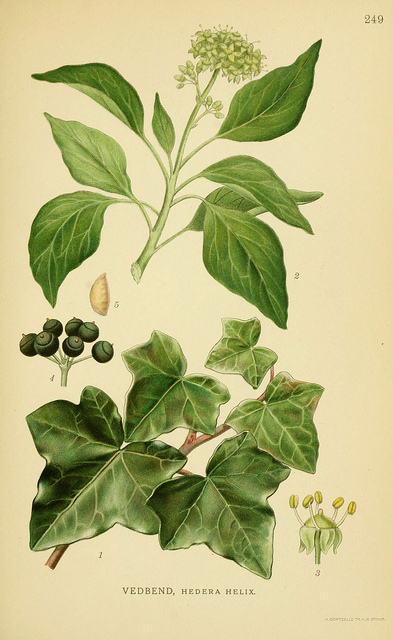
Hedera helix – botanical illustration
Moreover, cold and drought do not scare them: they withstand very low temperatures (-25°C) and lack of water once established. However, in Mediterranean areas, prefer shade to avoid scorching sun.
In the garden, ivy can form a low thickness boundary hedge if allowed to climb on a trellis. By alternating varieties, you can play with colours and create a changing hedge at a low cost that does not encroach on the garden. It will also cover an unsightly wall or integrate a garden shed or an overly prominent structure into the vegetation.
There are several species of ivy:
- Hedera helix or common ivy (also known as “English ivy”, “St. John’s herb”…). It is certainly the best known. It has lobed leaves of a very dark green. It is a European species perfectly adapted to our climates. It is also the easiest to grow indoors. There are many varieties that differ mainly in the colour and shape of their foliage.
- Hedera colchica or Colchian ivy (also known as “Persian ivy”) comes from the Caucasus. It is distinguished by its large heart-shaped leaves as well as its significant growth. This species is better as a creeper than a climber and particularly enjoys cool soil. Varieties with variegated foliage offer a strong visual impact.
- Hedera canariensis (syn. Hedera algeriensis) or Canary ivy. This ivy is relatively less hardy (-12°C) due to its North African origins, but it is one of those plants that quickly regrow and regain a beautiful appearance after frost. Its stems and branches are purple to burgundy red, and its leaves are large, bulging, and borne on red petioles. It is an ivy often used as ground cover. It is ideal in dry soil and warm climates.
Note that Glechoma hederaceae or ground ivy is sometimes classified among ivies. It is not an ivy but a creeping perennial from the Lamiaceae family that produces small blue flowers in summer. It is moderately hardy and enjoys ordinary soil in shade or partial shade.

Evolution of an inflorescence of Hedera helix.
The main varieties of ivy
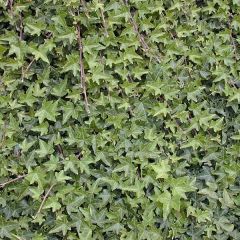
Hedera helix - Common Ivy
- Flowering time October, November
- Height at maturity 10 m
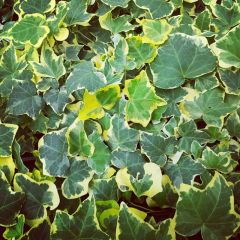
Hedera helix Goldchild - Common Ivy
- Flowering time October, November
- Height at maturity 1,50 m

Hedera helix Glacier - Common Ivy
- Flowering time October, November
- Height at maturity 3 m

Hedera helix Marginata Elegantissima - Common Ivy
- Flowering time October, November
- Height at maturity 2,50 m

Hedera helix Kolibri - Common Ivy
- Flowering time October, November
- Height at maturity 60 cm
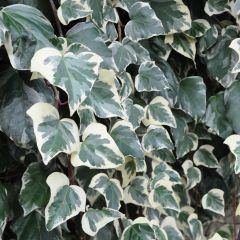
Hedera algeriensis Gloire de Marengo - Algerian Ivy
- Flowering time October, November
- Height at maturity 6 m

Hedera helix Needlepoint - Common Ivy
- Flowering time October, November
- Height at maturity 4 m
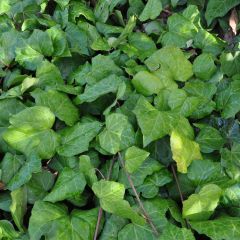
Hedera colchica - Persian Ivy
- Flowering time October, November
- Height at maturity 12 m
Discover other Hedera - Ivy
View all →Available in 1 sizes
Available in 3 sizes
Available in 1 sizes
Available in 1 sizes
Available in 2 sizes
Available in 1 sizes
Available in 1 sizes
Available in 2 sizes
Available in 1 sizes
Available in 1 sizes
Planting Ivy
Where to plant ivy?
Ivy thrives in shade or partial shade; it can be installed on a north-facing wall, at the base of a tree to climb, or even on a dry shaded bank. Varieties with variegated foliage, however, require a brighter exposure. The soil is of little importance to ivy, although it prefers fertile soil; it withstands drought quite well and tolerates most poor soils. Depending on the variety, it is hardy from -12°C to -25°C.
When to plant?
September to November and February to March are the most reasonable months for planting, with a preference for autumn so that the liana can settle in before summer.
How to plant?
In the ground:
- To facilitate recovery, hydrate the root ball by placing it in a basin filled with water
- Dig a hole 2 to 3 times the size of the root ball
- Remove the ivy from its pot and untangle the roots from the perimeter of the root ball
- Place the plant in the centre of the hole so that the top of the root ball (the collar) is level with the soil
- Add a mixture of garden soil and potting soil around the root ball to fill the hole, ensuring that the collar is not buried
- Firm the soil and water generously
- Water once or twice a week for the first two summers
In a pot:
- Hydrate the root ball by immersing the pot in a basin filled with water
- Spread a layer of drainage at the bottom of the pot or planter (clay balls, gravel, broken terracotta)
- Fill the bottom of the pot with a mixture of potting soil and garden soil
- Place the ivy and fill in with the soil/compost mixture
- Water (firm the soil)
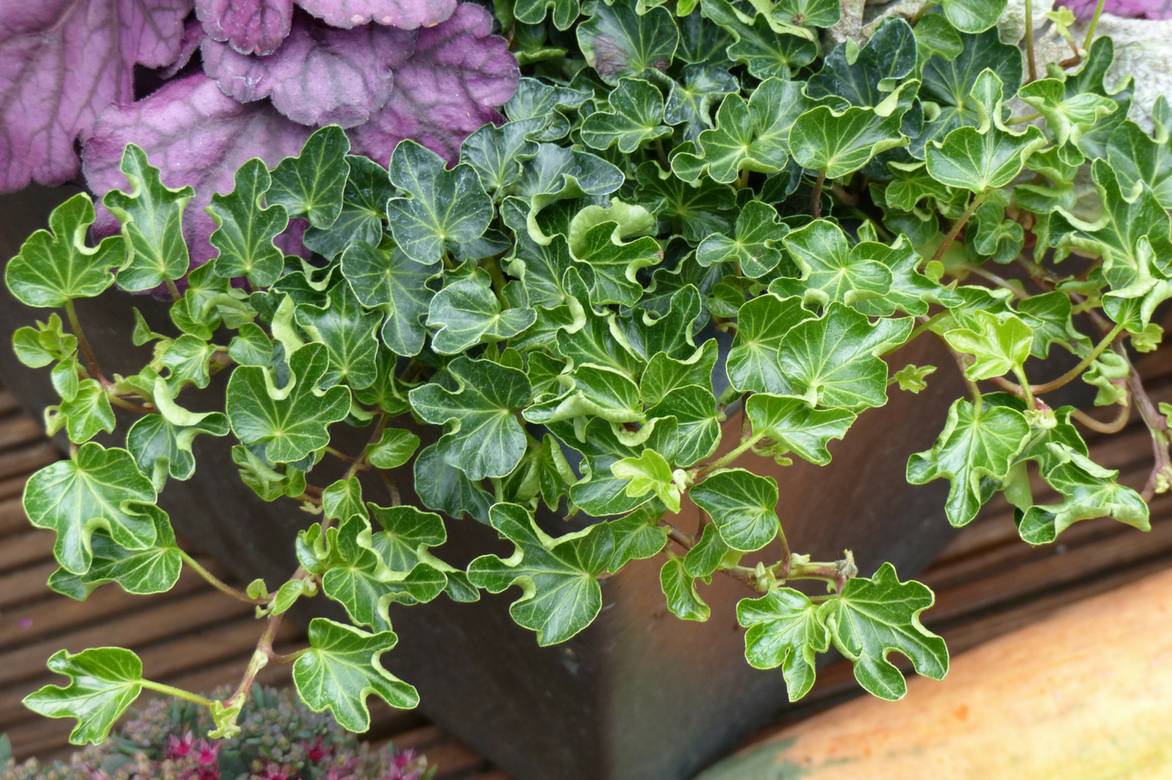
Hedera helix ‘Bredon’ adorns a planter alongside a beautiful coloured heuchera.
Care and pruning
Care
Ivy is easy to care for, requiring no specific attention. Additionally, it is quite drought-resistant once established.
Potted specimens can receive an organic fertiliser every two months during the growth period, from March to October. Allow the substrate to dry out slightly between waterings. In winter, do not amend and let the substrate dry out completely before watering.
Pruning
Ivy can become quite invasive, except for varieties with smaller growth. Regular pruning will prevent any overgrowth by simply pinching back the young branches to encourage ramification. In autumn, you can rejuvenate the base by cutting back old stems, which will help maintain control, and do not hesitate to cut branches that have non-variegated leaves (for the relevant varieties).
Precautions to take with ivy
Ivy is often feared for its vigour. Be aware that it can easily be controlled by taking these few precautions:
- If ivy is colonising a young tree, monitor its vigour and redirect it while there is still time.
- If your ivy is covering a facade or gable, avoid, by pruning it each spring, allowing it to reach the roof. It could slip into the smallest crevices and cause damage.
- To prevent excessive weight on a deteriorating render, prune the ivy each year.
→ read on the blog, Olivier’s article: “5 common misconceptions about ivy”
Diseases and Pests
Ivy is not very sensitive to diseases and pests: it is a wild species that has developed the best defenses and resistances against diseases.
However, under scorching sun, it will dry out. It is important to avoid placing it behind a window if indoors and to choose a more sheltered location if outside. Its leaves turn black if overwatered and an excess of fertiliser causes variegated specimens to turn green: stop the fertiliser application and cut the green leaves.
Red spider mites or scale insects can invade it when grown in a greenhouse; initially, it will be sufficient to cut the affected branches and ventilate the ivy. If aphids are too voracious, treat locally with sprays of soapy water.
Ivy harbours many beneficial insects, and treatments against aphids can also affect beneficials, which is why it is best to act only in the case of a severe infestation.
→ Learn more about the diseases and pests of ivy
Propagation of ivy
Ivy is an easy plant to propagate. The most commonly used propagation techniques are propagation by cuttings or layering.
Propagating Ivy by Cuttings
Ivy can be propagated in water and in soil. In March-April and October-November, you will have a greater chance of success.
Propagating in Water
- Take a 10 to 12 cm cutting from a young branch
- Remove the leaves at the base
- Place these cuttings in a glass filled with water
- When roots have appeared after a few days to a week, transplant them into a pot of potting mix/garden soil (1/3)
- Keep moist and plant out in spring or the following autumn
Propagating in Soil
- Take a 10 to 12 cm cutting from a young branch
- Remove the basal leaves
- Plant in pots filled with a potting mix/sand (1/3)
- Cover with a film, a plastic bag, or create a cloche using the top part of a bottle, for example, and allow them to root
- In spring or the following autumn, transplant into a pot or plant out
Layering Ivy
Ivy naturally layers, making it an easy method of propagation. In spring, from March to April, you can follow this method:
- Select a branch located near the ground, remove the leaves from the area to be buried,
- Make a cut in the bark of this section to encourage root growth,
- Bury this cut section in a pot containing a potting mix/sand (1/3) and keep moist throughout the summer,
- In autumn, “wean” (separate it from the mother plant) the layer and transplant either into a pot or to its final location.
→ Learn more about propagating ivy in our tutorial!
Associating Ivy in the Garden
Ivy, due to its vigorous character, is not easy to associate, but its flowers, although charming, are quite discreet. In the garden, you may want to pair it with plants that have more remarkable flowering. Provided you keep your ivy in check, you can place it alongside flowering climbers such as roses or clematis. This will bring colour and whimsy to ivies with solid foliage.

An example of an autumn colour association for a cover-up: Hedera helix and Parthenocissus tricuspidata ‘Veitchii’.
For instance, the long blue flowering of the clematis Clematis julii will gracefully accompany the ivy H. helix Sagittifolia.
For ivies with variegated foliage, play with colours: the white flowers of the passionflower “Constance Elliott” will match the white-margined leaves of Hedera helix Marginata Elegantissima and in the shade, Hydrangea petiolaris ‘Silver Lining’ will advantageously replace the passionflower.
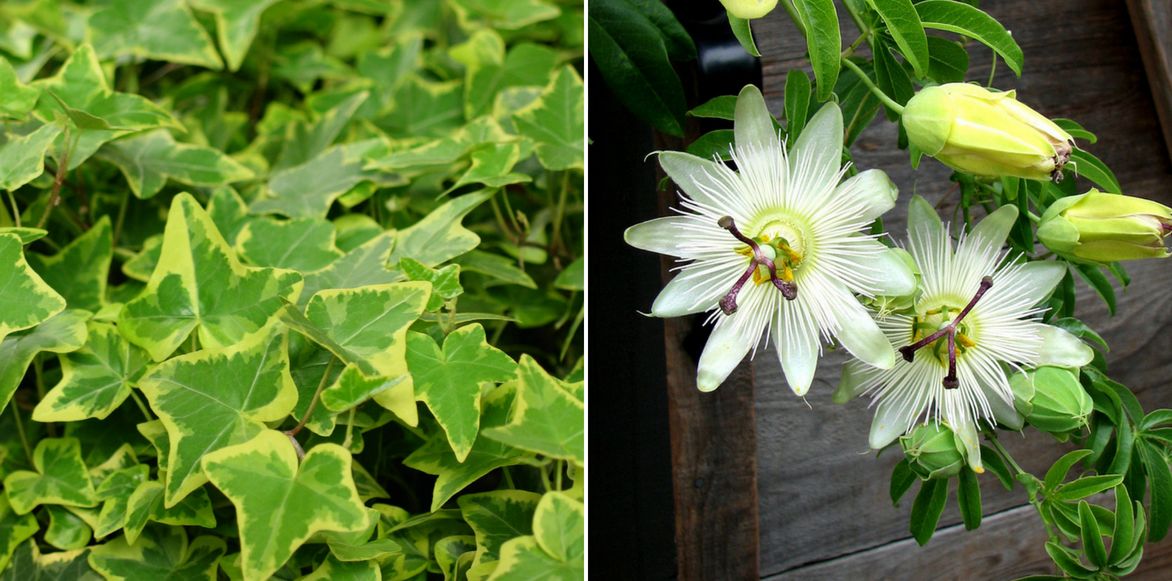
An idea for an association: Hedera helix ‘Marginata Elegantissima’ and Passiflora caerulea ‘Constance Elliott’.
As ground cover, spring bulbs such as daffodils or tulips will punctuate the foliage with their flowering and mark the beginning of the season.
The stinking iris (Iris foetidissima) with its mauve flowers in May followed by its red-orange fruits in September will also be a good companion for ground cover.
Ecological Benefits of Ivy
Ivy conceals a very rich and varied ecosystem. It shelters a wide variety of insects, birds, and small mammals. Robins, goldcrests, and wrens nest there, and many insects live and hibernate within its evergreen foliage.
Ivy flowers after most other plants, extending the foraging period for pollinators, and the late-winter fruits nourish the birds.
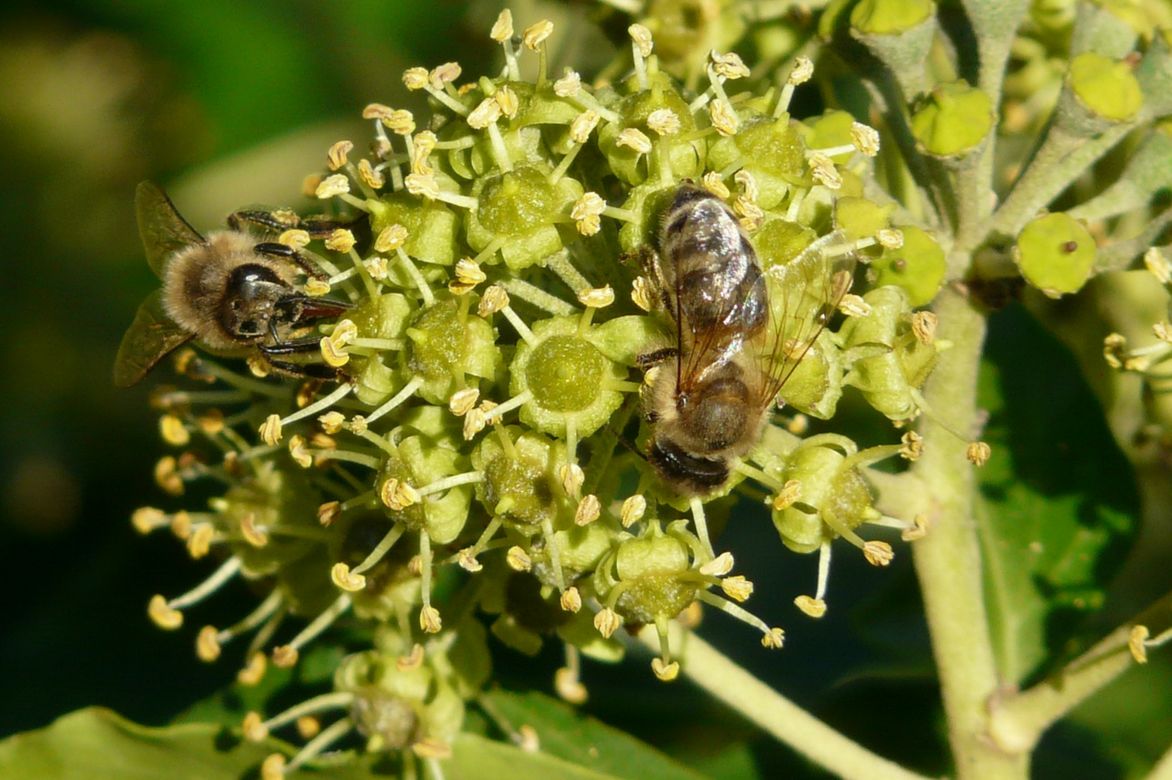
Ivy inflorescences are highly appreciated by foragers.
It is not a parasitic plant of the tree: its climbing roots are only used for climbing and not for siphoning the tree’s sap or even suffocating it. It adapts to the tree’s growth. On the contrary, it helps protect the tree from fire, frost, and animals that gnaw at the tree’s bark. Ivy absorbs excess moisture at the base of the tree and inhibits the action of fungi and bacteria that could attack the tree. They mutually benefit each other.
As ground cover, it maintains moisture and a constant temperature and provides refuge for soil fauna. It also prevents soil erosion.
Ivy, with its depolluting properties, is a true particle filter that allows for natural air purification. Ivy will treat dust and other chemical compounds such as benzene and its derivatives (toluene, xylene), formaldehyde…
Did you know?
Ivy is also a medicinal plant and was widely used in traditional pharmacopoeia. Today, it is included in the composition of syrups, cough lozenges, as well as lotions, creams, gels, and shampoos.
In the past, ivy was used to make laundry detergent. It contains saponins, which are natural surfactants. Surfactants stabilise emulsions, meaning tiny droplets of oil in water. Essentially, we solubilise oil (=dirt) in water! The advantage is that saponins are natural biodegradable molecules.
Useful resources
-
- Discover our collection of ivies
- How to choose an ivy?
- Did you know: 5 good reasons to plant ivies
- For more information on ivy and birds, check out the article from Zoom Nature
-
- Discover Olivier’s article: 5 misconceptions about ivy
- Article: Bellecour ivy: The terror of weeds!
- Advice sheet: Growing ivy in a pot
- Advice sheet: 6 ivies to discover
- Advice sheet: 6 variegated ivies to discover
- Advice sheet: Pairing ivy
- Advice sheet: Ivy in a pot, 5 pairing ideas and How to grow ivy in a pot?
- Find our tutorials: How to make an ivy kokedama?, How to make ecological and natural laundry with ivy?
Frequently asked questions
-
Which ivy to choose for indoors?
Hedera helix is best suited for indoors. Choose smaller cultivars, such as H. helix 'Kolibri' (the smallest) or Canary ivy (Hedera algeriensis, the most frost-sensitive). Avoid placing them behind glass or near a radiator. Pot maintenance is not demanding: water while allowing the substrate to dry slightly from March to October and add fertiliser every two months. During the period from November to March, space out the waterings and stop the fertiliser.
-
I would like to plant an ivy; will its roots risk damaging the ducts?
Roots are rather superficial (to avoid competing with their support) and do not invade nearby ducts. However, it is wiser to choose a less vigorous cultivar than the wild species... especially since you will have a greater choice of foliage (very finely cut like H. helix Needlepoint, marginate with white, like H. helix Marginata Elegantissima, or yellow like H. helix 'Goldflame'…).
-
How can I get rid of an old ivy that is damaging my wall?
A well-maintained structure will not be damaged by ivy. It is enough to prune it regularly to avoid overloading the wall. However, when it comes to an old building and the need to remove the ivy, one solution is to pull it all out, ensuring that every last piece of ivy that could "restart" is eliminated. This is a long and painful process... The best solution is to choose the right variety in advance: a cultivar will be less vigorous than the wild species.
-
In my garden, an ivy is climbing on a rather large tree. Should I cut the ivy to prevent it from suffocating the tree?
Ivy is not a parasitic plant and will only "suffocate" trees that are at the end of their life. In fact, there is a balance between ivy and the tree: ivy grows until the leaves of its host block its light. At this point, the two companions help each other: ivy protects the tree from frost in winter, from the sun in summer, and from large wildlife attacks, while the tree provides height for the ivy. As the tree ages, it has fewer leaves, and ivy resumes its growth, hastening its demise, hence the belief in the tree-killing ivy… it was simply too old. You can limit the vigour of ivy by pruning it at the level of the main branches; this will be very decorative and will preserve a shelter for wildlife.
- Subscribe!
- Contents
































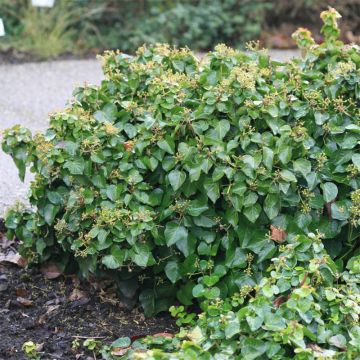
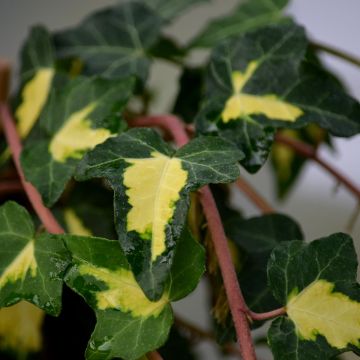
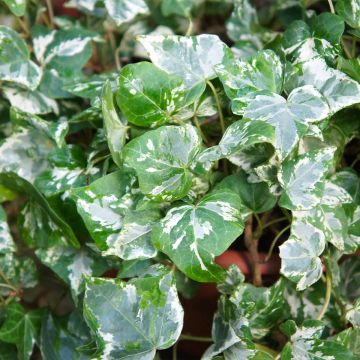

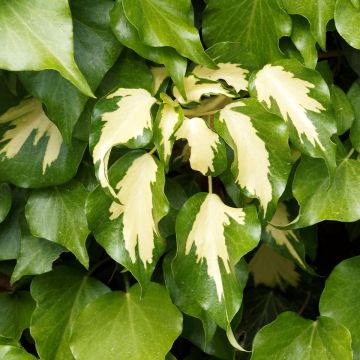



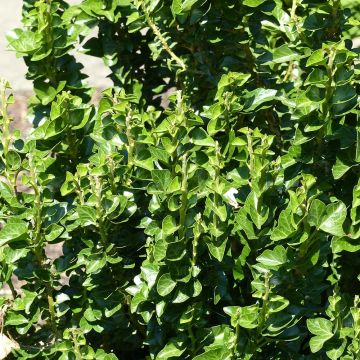
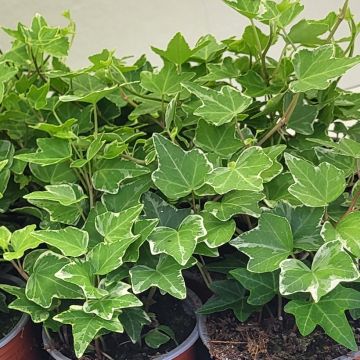
Comments